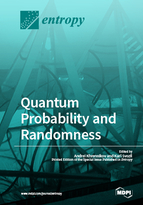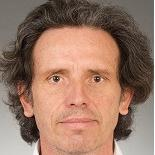Quantum Probability and Randomness
A special issue of Entropy (ISSN 1099-4300). This special issue belongs to the section "Quantum Information".
Deadline for manuscript submissions: closed (31 August 2018) | Viewed by 57824
Special Issue Editors
Interests: quantum foundations; information; probability; contextuality; applications of the mathematical formalism of quantum theory outside of physics: cognition, psychology, decision making, economics, finances, and social and political sciences; p-adic numbers; p-adic and ultrametric analysis; dynamical systems; p-adic theoretical physics; utrametric models of cognition and psychological behavior; p-adic models in geophysics and petroleum research
Special Issues, Collections and Topics in MDPI journals
Interests: quantum logic; automaton logic; conventionality in relativity theory; intrinsic embedded observers; physical (in)determinism; physical random number generators; generalized probability theory
Special Issues, Collections and Topics in MDPI journals
Special Issue Information
Dear Colleagues,
The last few years have been characterized by a tremendous development of quantum information and probability and their applications including quantum computing, quantum cryptography and quantum random generators. In spite of the successful development of quantum technology, its foundational basis is still not concrete and contains a few sandy and shaky slices. Quantum random generators are one of the most promising outputs of the recent quantum information revolution. Therefore, it is very important to reconsider the foundational basis of this project, starting with the notion of irreducible quantum randomness.
Quantum probabilities present a powerful tool to model uncertainty. Interpretations of quantum probability and foundational meaning of its basic tools, starting with the Born rule, are among the topics which will be covered by this issue.
Recently, quantum probability has started to play an important role in a few areas of research outside quantum physics; in particular, quantum probabilistic treatment of problems of theory of decision making under uncertainty. Such studies are also among the topics of this issue.
The areas covered include:
- Foundations of quantum information theory and quantum probability;
- Quantum versus classical randomness and quantum random generators;
- Generalized probabilistic models;
- Quantum contextuality and generalized contextual models;
- Bell’s inequality, entanglement and randomness;
- Quantum probabilistic modeling of the process of decision making under uncertainty.
Of course, possible topics need not be restricted to the list above; any contribution directed to the improvement of quantum foundations, development of quantum probability and randomness is welcome.
Prof. Dr. Andrei KhrennikovProf. Dr. Karl Svozil
Guest Editors
Manuscript Submission Information
Manuscripts should be submitted online at www.mdpi.com by registering and logging in to this website. Once you are registered, click here to go to the submission form. Manuscripts can be submitted until the deadline. All submissions that pass pre-check are peer-reviewed. Accepted papers will be published continuously in the journal (as soon as accepted) and will be listed together on the special issue website. Research articles, review articles as well as short communications are invited. For planned papers, a title and short abstract (about 100 words) can be sent to the Editorial Office for announcement on this website.
Submitted manuscripts should not have been published previously, nor be under consideration for publication elsewhere (except conference proceedings papers). All manuscripts are thoroughly refereed through a single-blind peer-review process. A guide for authors and other relevant information for submission of manuscripts is available on the Instructions for Authors page. Entropy is an international peer-reviewed open access monthly journal published by MDPI.
Please visit the Instructions for Authors page before submitting a manuscript. The Article Processing Charge (APC) for publication in this open access journal is 2600 CHF (Swiss Francs). Submitted papers should be well formatted and use good English. Authors may use MDPI's English editing service prior to publication or during author revisions.
Benefits of Publishing in a Special Issue
- Ease of navigation: Grouping papers by topic helps scholars navigate broad scope journals more efficiently.
- Greater discoverability: Special Issues support the reach and impact of scientific research. Articles in Special Issues are more discoverable and cited more frequently.
- Expansion of research network: Special Issues facilitate connections among authors, fostering scientific collaborations.
- External promotion: Articles in Special Issues are often promoted through the journal's social media, increasing their visibility.
- e-Book format: Special Issues with more than 10 articles can be published as dedicated e-books, ensuring wide and rapid dissemination.
Further information on MDPI's Special Issue polices can be found here.
Related Special Issues
- Quantum Probability and Randomness II in Entropy (13 articles)
- Quantum Probability and Randomness III in Entropy (12 articles)
- Quantum Probability and Randomness IV in Entropy (15 articles)
- Quantum Probability and Randomness V in Entropy (5 articles)








